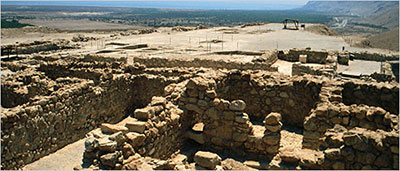Yesterday the New York Times released a follow-up article based on one published in the most recent edition of Biblical Archaeology Review. It seems that there are a small, but growing number of archaeologists who are now re-examining the link between the Qumran Community and the cache of scrolls found among the caves along the Dead Sea. After ten years of working with the Qumran excavations, archaeologists, Yizhak Magen and Yuval Peleg of the Israel Antiquities Authority are now saying that Qumran is in no way connected to the scrolls which have been linked to the community almost since they surfaced in the middle of the last century.
Not only that, but they are denying Qumran’s connection to monasticism and an Essene identity as well. They conclude that the community at Qumran was a secular establishment was no more than a pottery factory, and that the repository of scrolls came from a divergent collection of sources fleeing from Roman persecution. One seemingly tell-tale sign is the conspicuous lack of a single manuscript addressing the topic of celibacy, a cornerstone of Essene doctrine. This, along with an extensive repository of pottery equipment and pottery-related items among the community, as well as the absence of any religious writings actually found “in” the Qumran sector have given this team of archaeologists a fair amount of evidence to support this theory. Read up on it when you have a chance.
Similar Posts:
- Newly Found Lead Codices – Christian or Kabbalistic?
- Identity Theft Arrest Related to Dead Sea Scrolls Dispute
- Historical House of Jesus Found?
- Small Anti-Disengagement Victory
- Israelites found in Ancient Egypt
